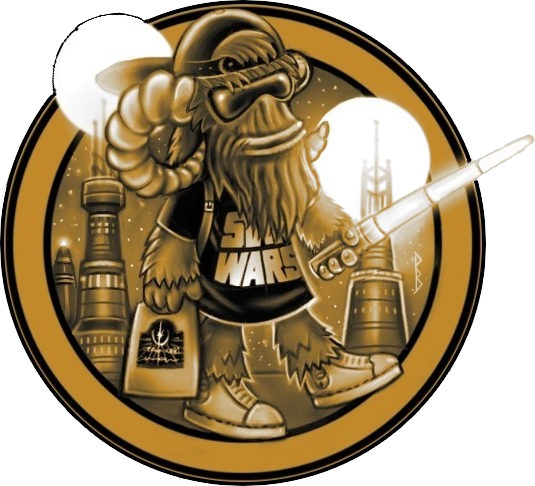There’s always a lot of discussion around other sci-fi franchises about how their futuristic technology has now become the real technology we have today and how it predicted the future and so on. Logically then, this would happen with Star Wars tech in time, and there are certain things we want to see come to life.
The issue is the whole ‘they didn’t stop to think if they should’ argument, as honestly a lot of the tech we see across the movies and series may look cool but would be a categorically poor idea in the modern world. So here are four Star Wars tech items that would be both awesome to have but also probably a poor idea.
Lightsabers
Let’s get the obvious one out of the way first. Every man, woman, child and Samuel L. Jackson has played with a pretend lightsaber at some point in their life, swinging a stick around and making lots of ‘wooosh’ noises, and a real version is probably the #1 item on the wish list of most fans around the world.
Take a step back though and this becomes a genuinely scary prospect. We’re not talking about glowy plastic sticks anymore, we’re talking about superheated energy beams that can cut through damn near any material in an instant. Now the argument here is that these would likely be used by highly-trained people with absolute care like any other weapon.
The problem with this is that sooner or later, someone is going to want to spin it around and go ‘wooosh’. It isn’t so much of a possibility as an inevitability, and pretty soon you get a lot of people paying tribute to Darth Vader.
The more concerning thing here is that, as many eager fans likely know, we’re getting closer and closer to the real thing. Estimates from engineers working on these projects put it around 30-40 years away from having a power source small enough to make it happen, which is thankfully at least long enough for the prosthetic limb industry to make some much-needed advances.
Podracing
This is about as clear-cut an example as we can find. Yes, every Star Wars fan would love to see real podracing, and yes, it would be one of the worst ideas ever conceived by humanity. History has taught us that even regular, slower, horse-drawn chariot racing can be incredibly dangerous, and that doesn’t even leave the ground.
So if you take out the horses and replace them with high-power engines with a top speed of up to 700km/h, then launch them through narrow canyons in what is basically a death race, it is probably going to end in disaster. Case in point, the main race from The Phantom Menace where pretty much none of the starting racers made it to the end.
Of course, there are parts of the U.S. where high-speed racing with a certain degree of danger is massively popular. Across the South and the Midwest, NASCAR is a much-loved sport, and fans flock to watch and even place bets on races at local bookmakers like Caesars Ohio, so the atmosphere and appetite for this kind of sport is there. Still, NASCAR ends up being several degrees slower and involves much less explosive material, so while podracing may be great for betting on, it probably wouldn’t get past health and safety.
Universal Translators
This may seem like an odd entry as it can be hard to think of anything to go wrong here. In theory, anyone being able to instantly understand anyone else would benefit the entire world by removing miscommunication and misunderstandings, which do cause a lot of problems as is. Not just in Star Wars, it’s seen as a necessary step for galactic harmony across nearly every sci-fi franchise.
Here is the issue though. Language is a deeply, deeply complex thing, and in many ways, it’s something we still don’t entirely understand. While we can certainly find some logic in things like grammar and sentence structure, the rest is a very murky area. You have languages like Xhosa which uses click noises as a common feature, something almost unique to that region of the world. Then you have Mandarin Chinese, where the intonation used when speaking can affect the meanings of words.
The fact is, we are a very long way away from even being able to translate accurately between the languages we know about, let alone new alien ones. The danger is that if we go into a situation with a translator that is flawed, the risk of miscommunication goes right up, and that really isn’t something you want when it comes to space-faring alien civilizations.
Warp Technology
The holy grail of sci-fi, hyperspace in Star Wars is something that absolutely grabbed the imagination of thousands of young scientists the first time they saw it. The ability to travel between worlds almost in an instant would open up the entire galaxy for exploration, clearing the way for colonization to other worlds and more.
As any sci-fi fan knows though, warp tech goes wrong in nearly every form we see it, and it almost always results in widespread destruction and huge loss of life. Even within Star Wars, hyperspace isn’t really understood, it’s just used, and we are still a long way behind even that. Admittedly, every new frontier throughout history has taken sacrifice, but it’s the scale of the potential sacrifice on this one that makes it all the more concerning.
The good news is, there are plenty of things from Star Wars like bionics and hover tech that is far more promising with real-world application, so it isn’t all doom and gloom. Just remember to take care of your wrists when that lightsaber finally does come through.


